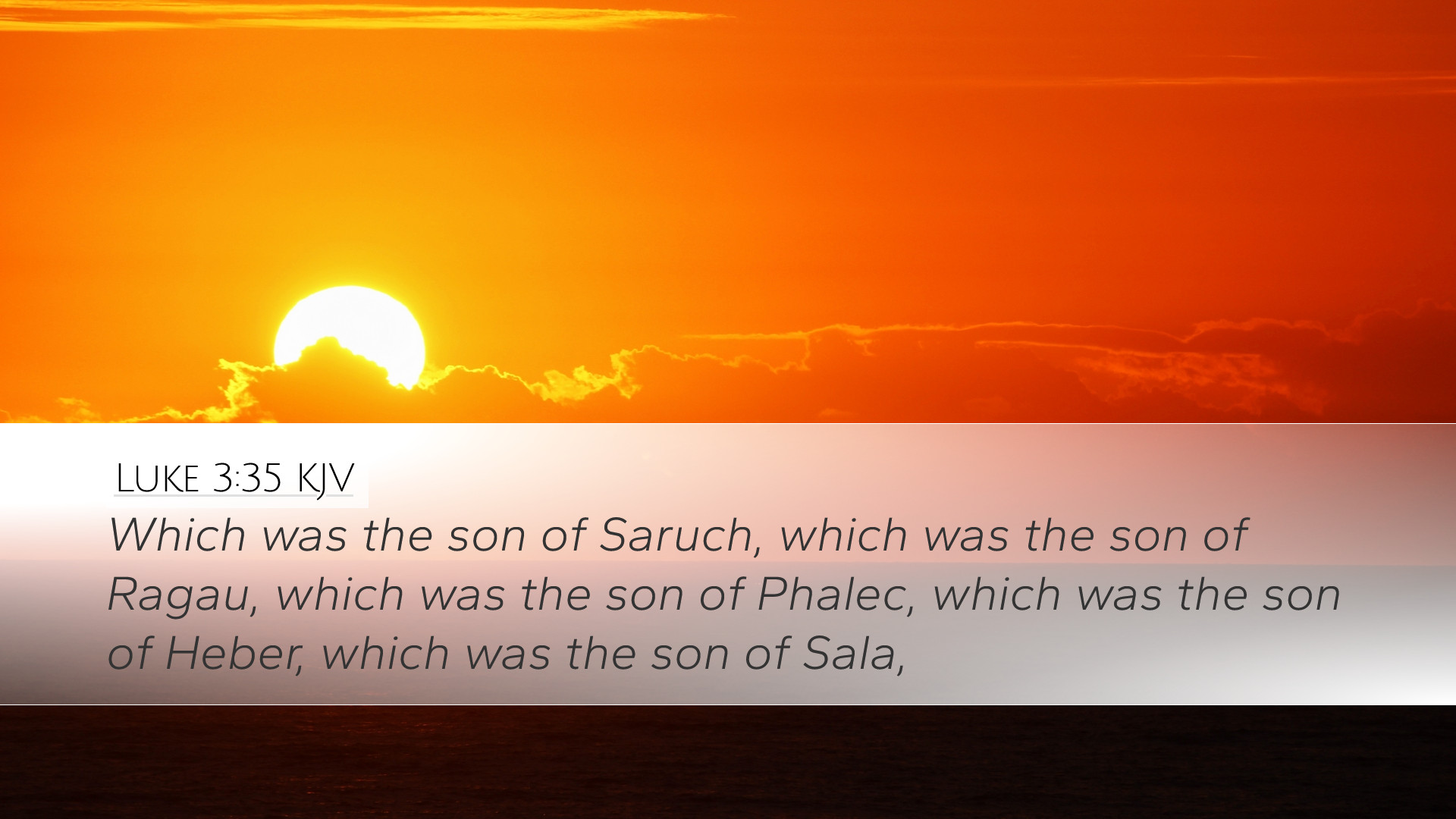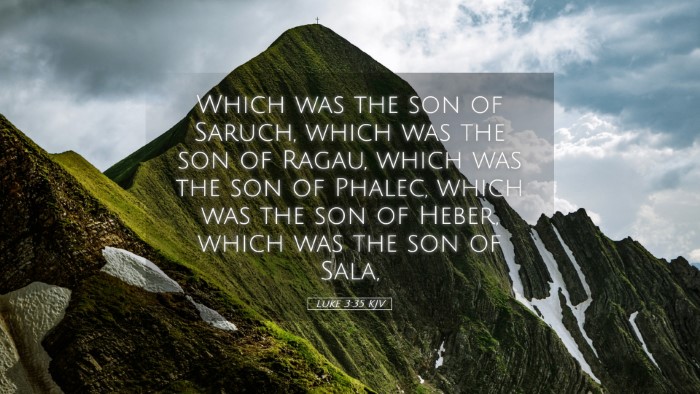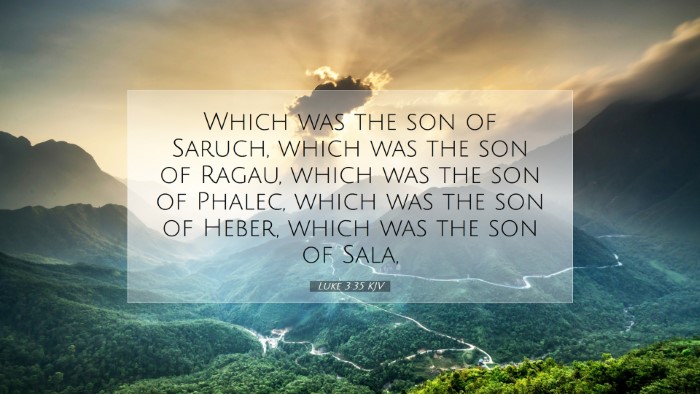Commentary on Luke 3:35
Verse Reference: Luke 3:35 - "Which was the son of Ammon, which was the son of Esli, which was the son of Naghai."
Introduction
This verse is part of the genealogy of Jesus Christ as presented in the Gospel of Luke. The genealogy serves not only as a historical record but also as a theological statement regarding the identity of Jesus. The names listed provide a connection between Jesus and significant figures in Israel's history. Let's explore the insights offered by various public domain commentaries to understand the importance of this genealogical record.
Historical Context
-
Matthew Henry's Commentary:
Henry emphasizes the importance of genealogies, especially in Jewish culture. They establish legitimacy and fulfill God's promises. By tracing Jesus' lineage, Luke affirms Jesus' rightful place in the line of David, linking Him to the Old Testament prophecies.
-
Albert Barnes' Notes:
Barnes notes that the genealogies in the Bible often serve dual purposes—historical documentation and spiritual interpretation. This verse illustrates the continuity of God's covenant through generations. Each name, though lesser-known, is a testament to God’s faithfulness across history.
-
Adam Clarke's Commentary:
Clarke comments on the significance of these obscure names. He suggests that they represent the common people in whom God’s plan unfolds. This inclusiveness is vital, highlighting that the mission of Christ transcends notable figures and embraces all of humanity.
Theological Implications
-
Matthew Henry's Perspective:
Henry points out that the genealogy shows God’s sovereign election. Each name is part of a divine plan leading to the Messiah. None of the names appear by chance; instead, they fulfill God's redemptive work throughout history.
-
Albert Barnes' Insights:
Barnes indicates that the genealogy is not just a list but demonstrates a direct lineage to the Davidic line. This is essential as it fulfills the prophetic promises concerning the Messiah, thereby providing a strong basis for Jesus’s messianic claims.
-
Adam Clarke's Analysis:
Clarke believes that the inclusion of less prominent figures emphasizes the universality of Christ's offer of salvation. It shows that God can and does work through ordinary individuals, reflecting His ability to choose anyone for His purposes.
Lessons for Pastoral Ministry
-
Importance of Heritage:
Understanding the lineage of Jesus encourages pastors to recognize the importance of spiritual heritage. Just as Jesus’ ancestry lays a foundation for His ministry, so do our spiritual forebears contribute to the faith we hold today.
-
Inclusivity in Ministry:
The mention of various lesser-known names in Jesus' genealogy serves as an important reminder that ministry should reach all people, offering hope and salvation to everyone, regardless of social status or background.
-
God's Providence:
Pastors may reflect on how God has guided their congregations. The genealogy reminds us that God works through history to bring about His will, encouraging believers to trust in divine providence even in uncertain times.
Conclusion
The genealogy found in Luke 3:35 reflects God’s sovereign plan through generations, underscoring the significance of both known and unknown figures in the story of redemption. This verse, while seemingly mundane in the context of a long list, carries profound theological weight and pastoral implications. As we study such passages, we are reminded of the broader narrative of salvation history and the inclusive nature of the Gospel.


